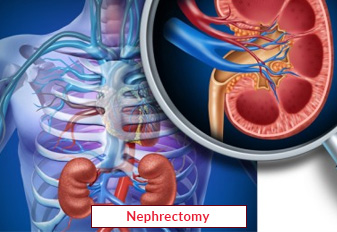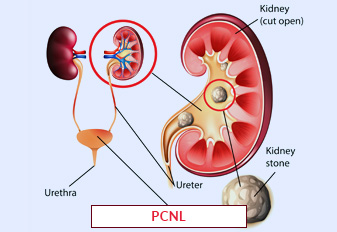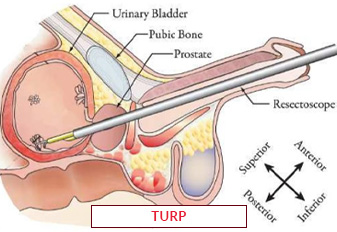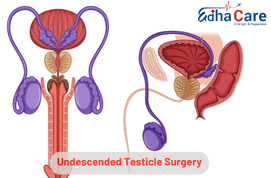Nephrectomy Surgery

Nephrectomy is the surgical removal of a kidney. The procedure is done to treat kidney cancer as well as other kidney diseases and injuries. Nephrectomy is also done to remove a healthy kidney from a donor (either living or deceased) for transplantation. The most common reason for a nephrectomy is to remove a tumor from the kidney. These tumors are often cancer, but sometimes they're not. In other cases, nephrectomy can help treat a diseased or damaged kidney.
Book an Appointment
About Nephrectomy Surgery
Nephrectomy is a surgical procedure in which a part or the entire kidney is removed. It is usually done to treat kidney cancer, but may also be done to treat other conditions, such as a non-functioning kidney or severe kidney infection.
There are two main types of nephrectomy: Partial nephrectomy and radical nephrectomy. In partial nephrectomy, only the part of the kidney that contains the tumor is removed, leaving the rest of the kidney intact. In radical nephrectomy, kidney tumor removal is done, along with surrounding tissues and lymph nodes.
Nephrectomy can be done using traditional open surgery or minimally invasive techniques, such as laparoscopic or robotic-assisted surgery. The choice of approach will depend on various factors, including the size and location of the tumor, the patient's overall health, and the surgeon's experience.
Before the surgery, the patient will undergo various tests and exams to ensure that they are fit for surgery. They may also need to stop taking certain medications and follow specific instructions regarding fasting and drinking.
After the surgery, the patient will need to stay in the hospital for a few days to monitor their recovery. They may experience some pain and discomfort, which can be managed with pain medication. It is important to follow the doctor's instructions regarding activity level and diet during the recovery period.
Procedure of Nephrectomy Surgery
Nephrectomy surgery can be performed using different techniques, depending on the size and location of the tumor, as well as the patient's overall health. The main techniques are:
- Open surgery: In this technique, a large incision is made in the abdomen or side to access the kidney. The surgeon then removes the kidney along with surrounding tissues and lymph nodes. This technique is rarely used today, except for complex cases or when laparoscopic or robotic-assisted surgery is not possible.
- Laparoscopic surgery: In this minimally invasive technique, several small incisions are made in the abdomen, through which a laparoscope (a long, thin tube with a camera) and surgical instruments are inserted. The surgeon uses the laparoscope to visualize the kidney and surrounding structures and removes the tumor and kidney through one of the incisions.
- Robotic-assisted laparoscopic surgery: This technique is similar to laparoscopic surgery, but the surgeon controls a robotic system that enhances the precision and range of motion of the surgical instruments. This allows for a more precise and less invasive surgery.
- Partial nephrectomy: In this technique, only the part of the kidney containing the tumor is removed, leaving the rest of the kidney intact. This is usually done when the tumor is small and located in a favorable position, and when preserving kidney function is important.
The specific procedure and technique used will depend on the patient's individual case and the surgeon's preference and expertise. Before the surgery, the patient will undergo a thorough evaluation to determine the most appropriate technique and to ensure that they are fit for surgery.
Require Assistance?
Get A Quick Callback From Our Healthcare Experts
Other Specilities We Cover

Percutaneous Nephrolithotomy (PCNL)

TURP




